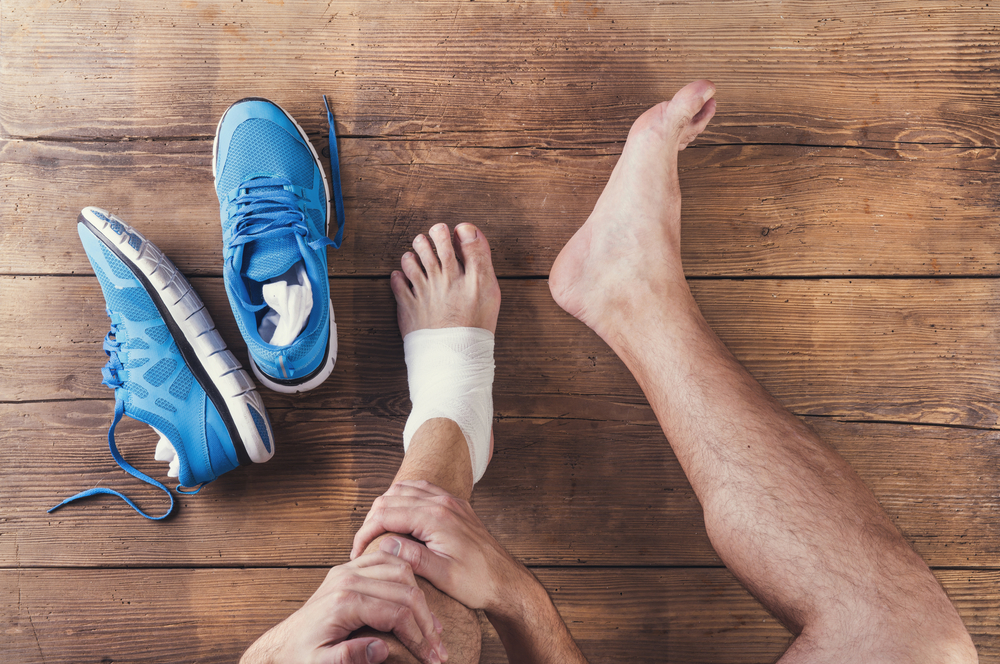
After working hard to keep your body in shape, there is nothing more frustrating than becoming injured and watching your progress slip back. For many athletes, the inability to train can be devastating, especially if suffering an injury that could potentially keep them from returning to their sport.
As a runner, I experienced the trauma of twisting my ankle on a run. Feeling as if the pain would never go away, I allowed myself to wallow in the idea that I would never again run like I did pre-injury. By the time, I put myself back in a pair of running shoes, I was so out of shape I struggled to run half the distance I could have before.
It’s important to work on staying fit even when injured. Sitting around waiting for the pain to subside, will only drive you stir crazy and put you back months of progress. Here are some ways to continue working on your fitness even when you’re hurt.
1. Find Other Options
When suffering from an injury, you may not have to give up your training program in its entirety. If your injury isn’t serious, continue going to the gym, just avoid putting strain on your injured body part. For example, if you have an injured wrist, focus on leg workouts, or call it a cardio day and go for a run.
You may also want to consider exercises that cause less strain on your body overall and may actually be relieving on injured joints, like swimming or yoga. While it may not be the workout you’re used to, you can work on staying fit until you are capable of returning to your favorite weights and machines.
2. Focus on Nutrition
Don’t take your injury downtime as an excuse to sit on the couch eating junk. If you’re dealing with a serious injury that is keeping you from working out, like a broken leg, take this time to focus on nutrition. Revamp your meal plan, or just learn new recipes to incorporate into your already existing plan.
While maintaining a strong diet won’t keep your muscle progress maintained, it will guarantee you’re not falling too far back on your progress. Staying fit is more than just getting in a great workout, and what’s even more, certain foods can help you heal faster. Do your research on anti=inflammatory meal plans for more information.
3. Know When to Push Through
Before you take a time out from your workout plan, know that it is an injury and not just pain. While you should never push through pain to a level that makes you too uncomfortable, some pain is natural when it comes to pushing your body to the next limit.
If you need help deciphering if your injury is okay to continue working out through, consult a doctor or trainer who will be able to help.
4. Still Train, Just Train Less
If you’re dealing with a less serious injury, you may still be able to continue your workouts, just at a less intense rate. Use less weight than you are used to, especially on the injured body part. Keep your movements slow and focused, staying aware of the injury so you can stop if it gets too uncomfortable and you don’t do any more damage.
5. Adopt a New Routine
If you’re experiencing pain from tendinitis or carpal tunnel, it is probably because you’re not changing up your routine enough. Tendinitis pain occurs when performing the same repetitive movements too often, and is only amplified when you add heavy weights.
Look for new ways to work out your muscles, or target an entirely new muscle group while you wait for the injury to heal.
6. Avoid Over Stretching
When it comes to muscle pains, you may feel the need to stretch it out. But over-stretching can result in a muscle tear, and you’ll be out a lot longer than you originally would have been.
When it comes to muscle pulls, like a hamstring pull, it’s best to let it be.
7. Know Your Limits
For many athletes, it can be difficult to accept that you aren’t 100%, and you may try to push yourself too far. If you’re injured and don’t recognize your limits, you’ll probably end up doing more damage than good.
Even when working on staying fit, know what your body can handle and what is too much. Pushing yourself too hard will keep you out of the game longer than necessary.
8. Take Your Time
It can be difficult to sit back and watch rather than participating, but when it comes to healing, it’s best to wait until your body is ready before putting yourself back in.
If you don’t heal correctly the first time, you may be dealing with issues for the rest of your life. Wait the pain out and do your best not to get over eager. Staying fit is important, but so is your health. Don’t do anything until you know you’re ready.
What are your tips for staying fit while injured? Share your tips in the comments below.